Combat aircraft. And-xnumx: is it so good, is it so bad?
Let's think and reason. As befits intelligent and objective people.
Two mistakes designer Polikarpov
Nikolay Nikolaevich Polikarpov is, of course, a star in our stories.
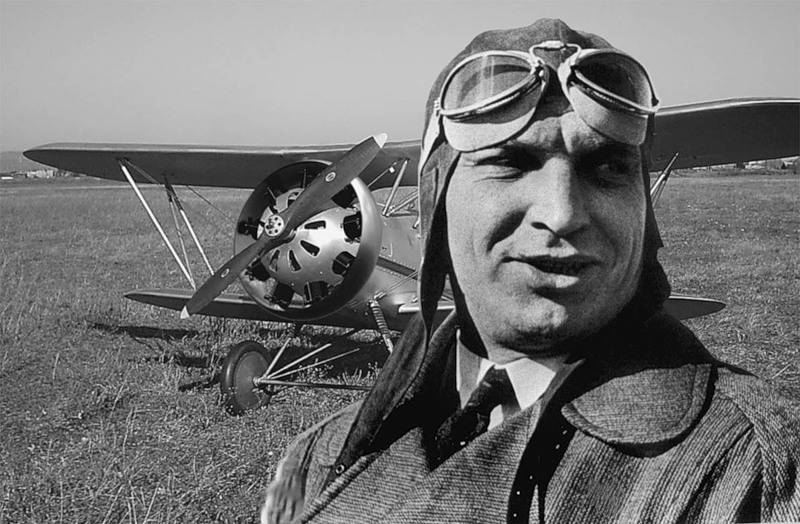
You can say anything, but while Yakovlev, Lavochkin, Gurevich, Ilyushin were taught to fly their first gliders and airplanes, the Polikarpov fighters closed our skies.
It is a fact, as they say, "scrap". It must not be forgotten. Nor should we forget that Nikolai Nikolayevich Polikarpov, a Russian man, could very well be in 20-s in America who was well fed and promising, along with his teacher, the great Sikorsky.
But it happened like this, and the great Sikorsky continued his work in America, and the great Polikarpov ... However, let us wait until the analysis of a personal matter.
The fact is that our whole galaxy, it was later. And first were Tupolev and Polikarpov. And these two giants under the shadow of their wings allowed them to grow a whole cohort of designers. But that's not the point.
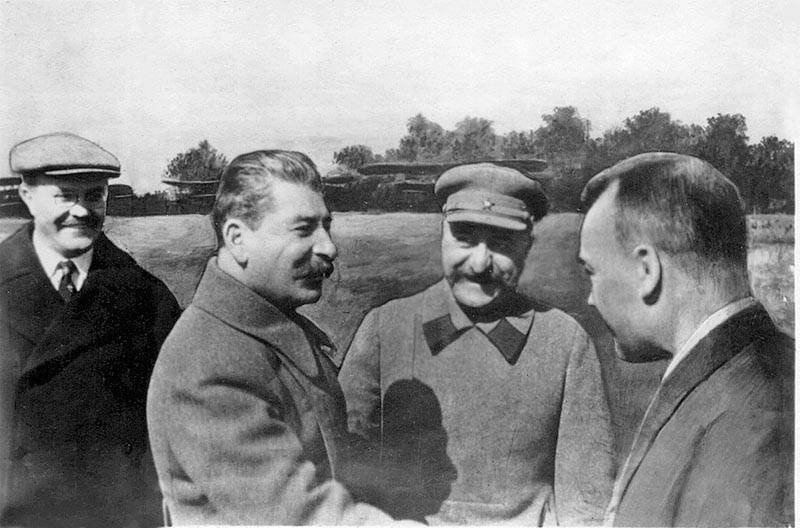
The question is, what was the i-180. And what Polikarpov himself saw on this plane?
1937 year. Benefis, so to speak, Bf-109 in Spain. All Soviet aircraft designers rushed to create a similar plan of aircraft with water-cooled engines.
All but Polikarpov.
The question of why he did this will remain a long question. Most likely, Nikolai Nikolayevich initially decided to bet on more durable air-cooled motors. Well, the king of fighters had the right to do so. And to be right in the end ...
What thought then captured Polikarpov? Improving the flight characteristics of aircraft through the use of double-row star-shaped engines with a large number of cylinders. From 12 to 16.
The idea, as shown by the practice of the Second World War, was good. It was airplanes with two-row "stars" that became the best fighters (and not only) of that war.
Was there such a motor in the USSR? Understandably, no. There was another project. M-85.
The basis of the project of the new motor M-85 was a weak French motor "Mistral-Major" of the firm "Gnome-Rhone". Mistralem was not a motor, and the major was rather arbitrary, since it gave off all 850 horsepower.
The first blunder of Nikolai Nikolayevich was the calculation of precisely this motor. And as soon as the release of M-85 was mastered in Zaporozhye, it was under him that the I-180 was also developed.
Here it is worth understanding that Polikarpov had a reliable and fully developed motor. M-25, aka Wright-Cyclone R-1820-F3, successfully installed in the same years on I-15, I-15bis, I-16 and I-153.
But Polikarpov looked much further. And he saw a perspective that was clearly present. And in subsequent years, the engine line progressed, M-86 (900 hp), M-87 (950 hp), M-88 (1100 hp) appeared. But at the time of the commencement of work on the I-180 there was only a very “raw” M-85 with all the ensuing consequences. And this was the first mistake of Polikarpov.
The error was forced, because the plane was needed both in fact and politically. He was needed both by the country and by Polikarpov personally, because ... because he had reasons for launching this aircraft into the series.
And the second fatal mistake was precisely the haste with which work was done on the I-180. Just a year after the start, the M-87 completely rolled it over, and it would have been possible to build a plane. But alas, it turned out the same flight in 1938 year.
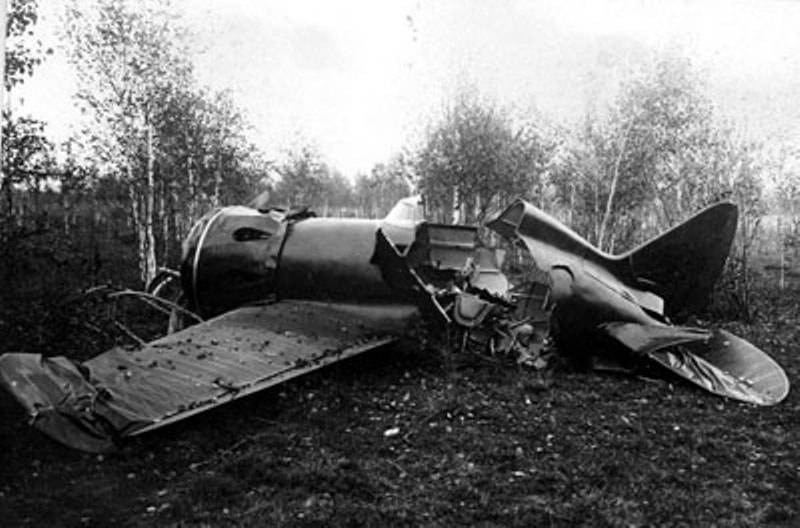
But we will not judge so much, because the war in Spain, where Bf-109 suddenly debuted, and moving from place to place, which fell on the Polikarpov Design Bureau, and quite a large load of design bureau, will also speak for Polikarpov. besides I-180 (WIT-1, WIT-2 and future Su-2).
It is easy to judge after many years ... And Polikarpov had more than enough envious people. And those wishing to press it from the design Olympus all the more.
Flour soviet art
And in 1938, on the basis of the 1937 project of the year, the I-165 fighter with the M-88 engine Polikarpov developed the I-180 project.
It was a plane that was very close in design and layout with an X-16. The large size of the motor entailed an increase in the entire structure, so that the plane was not “ishachok”, but something “thicker”.
To arm the 180 was planned by four ShKAS synchronous machine guns: two to be installed above the engine and two at the root of the wing. In the future, the wing machine guns could easily be replaced by guns. The wing allowed such an operation, it is worth remembering that the I-16 completely allowed such a procedure, and in fact the planes were very similar in proportions.
DL Tomashevich became the leading designer for the new machine.
It should be noted that the motor dances did not pass even the king of fighters. The I-165 project was postponed because for it ... there was no motor! Very new, isn't it?
More precisely, the motor was like, but ... But the existing M-88P was different from the simple M-88, which had a gearbox. And, accordingly, I demanded a screw with a size of at least 3,2 meters under my lower revolutions.
What this threatened fighter, of course. A ragged nose that worsens taxiing, higher (and therefore fragile) landing gear and so on. But with M-88P, it was all not thank God, because the project was postponed.
And they started designing a seemingly similar aircraft based on an I-165, but originally planned for M-88Р. Tomashevich decided to wriggle out of the situation, using a new model of the screw in the project, VISH-23Е, which, according to calculations, was to compensate for the use of the "wrong" motor.
And in the summer of 1938, the construction of an experienced I-180 specimen began. All this is nothing, but in the fall began the assault, caused by the "Messerschmitt" in Spain.
Here you need to understand such a thing: the fighter was put into construction at the experimental plant No. XXUMX in Moscow. Everything seems to be logical, and only proves the importance of the project.
Not really.
And here's the thing: Experimental Plant No. XXUMX was a really skillful and powerful team with an excellent base. But you just have to look at what this plant did! He was in the Tupolev design bureau! And he built all sorts of giants such as "Maxim Gorky", "Motherland", airplanes RD for Chkalov and Gromov, and so on. Class large aircraft. And even gigantic.
And here - here you are a fighter ...
That's all clear, remember that in 1937, Tupolev, Petlyakov, Bartini, Myasishchev and many others fell into the "Tupolev Sharagu", or the NKVD Central Design Bureau-29. The remaining abandoned plant was transferred to the first project that came across, with all the consequences.
And the consequences were. Polikarpov repeatedly reported on the low quality of the aircraft components produced, could not but report. But to do something cardinal was simply not realistic.
And then something happened that should have happened. A “commissioner” from the NKAP was sent to the plant. The man, in my personal opinion, is completely unsuitable for this.
Semyon Ilyich Belyaykin. Member of the Civil War, the military commissar of the divisional school and the head of the political department of the 7 of the Vladimir Rifle Division. He was awarded the Order of the Red Banner, but not for military merit, but in honor of the Red Army 10 anniversary.
From 1931 to June 1938 he worked at the Moscow Aviation Institute, reached the post of director of the institute. And suddenly he was directed at aviation factory, deputy director. Strange, right?
From 23 February 1938 - Head of the 1-th Main Directorate of the People's Commissariat of Defense Industry of the USSR. He oversaw the aircraft industry ...
There is, apparently, a strong desire to curry favor. However, in those days it was normal. Belyaykin began to “press” not only Polikarpov and Tomashevich, but also the entire staff of the plant. The goal, let's say, good: to accelerate the production of the aircraft. What methods acted by the former commissioner, is also clear. As I understand it, the situation at the plant was still ...
But Belyaykin paid dearly for everything. 20 December 1938, he was arrested and eventually rightly declared one of the perpetrators of the death of Chkalov. Sentenced to 15 years in a forced labor camp. He died in custody.
But even the cries and threats of Belyaykin did not help. The plane did not have time to make in the allotted time. The next “gift” was the unavailability of the VISH-23 screw. The manufacturer failed in time. The automatic screw pitch change was not received.
And in this situation began what today is called the "collective farm".
Polikarpov decided to use for the initial stage of testing for the aircraft the propeller VISH-3Е. He was ... let's say, similar in characteristics. But there was no automatic screw pitch change for him, so the screw control was made manual. Management, let's say, was minimal. In fact, the screw was set to take-off mode, and it was possible to slightly change the angle of attack to achieve maximum speed. That's all the adjustment.
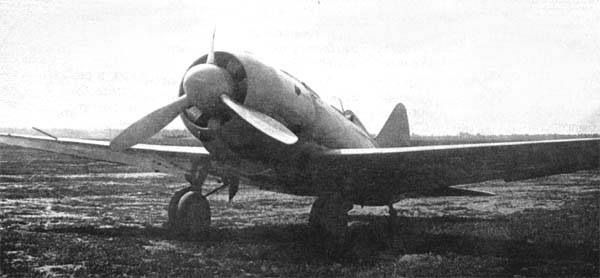
Naturally, this immediately entailed a noticeable decrease in the efficiency of the propeller motor group in general and overheating of the motor in particular. Plus, the constant work at higher speeds could not have a positive impact on the resource of the motor.
With overheating of the engine decided to cope by a simple action: they took and removed the engine cooling blinds.
Understand in principle. Polikarpov, who had been pressured by Belyaykin, wanted to carry out all the tests on time, report back, and then, when VISH-23E and the automatic control device appeared at his disposal, return everything back and install the blinds. In principle, it is more than reasonable for such a situation.
But "I blinded him from what was" - this is still not for aviation.
In general, the aircraft that was somehow made up in December (we emphasize) went to flight tests.
Fatal flight
Despite a number of breakdowns and identified defects, the 180 stubbornly walked towards the first flight. And this day has come. And at the same time became the day of the tragedy.
It is still clearly not clear who made the decision to fly. Much says for the fact that it was Chkalov himself. Polikarpov and Tomashevich did not approve the flight list, which actually saved Polikarpov.
In the column "Signature of the person responsible for producing the aircraft," no one ever signed. As follows from this document, the task provided a safe landing even in the event of an engine stop: "... departure without cleaning the chassis, with speed limits, according to the instructions of the chief designer of the plant comrade Polnakpov NN Duration 600-10 min ... "
The task was signed by the leading engineer N. Lazarev, who, in principle, had no right to do this. Hence we can conclude that Chkalov himself put pressure on Lazarev. The reasons that prompted Chkalov to such an act, of course, we will never know, we can only assume that Valery Pavlovich was rooting for the fate of the plane and just wanted to help his design bureau with the plane at all costs.
Well-intentioned ... Chkalov’s intentions were the best, and he was a specialist in “raw” aircraft, but nevertheless, the consequences were dire.
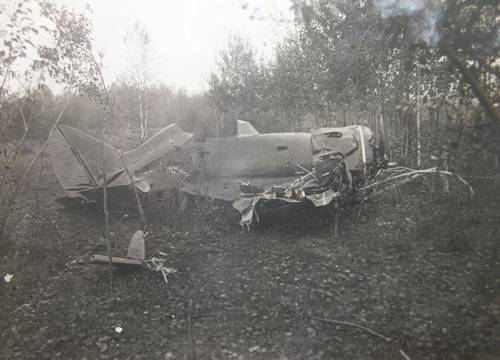
15 December suddenly became cold to -25 degrees. Nevertheless, Chkalov performed a takeoff on an I-180.
He made the first lap over the airfield, but went to the second with a long distance, at a height of about 2000 m, which was a clear violation of the flight task. The landing glide turned out to be steeper than the pilot had originally intended, and it was necessary to slightly tighten the plane by giving gas. Alas, the motor simply died out, and Chkalov sat down among the buildings and structures. Including in the path of the aircraft was the ill-fated transmission tower.
In general, test pilots were killed and the testing machines of other designers. And nothing, the cars were in the series and successfully flew. It is the fate of any tester to walk on the edge of the abyss.
If Polkarpov were not Chkalov as a full-time tester, everything would probably be fine. But the hero of the polar flight, the popular favorite and favorite of Stalin ...

The government commission called the stop of the motor due to the overcooling due to the lack of those frontal blinds as the cause of the disaster. Now there are other opinions, of various kinds, but for me, stopping due to hypothermia in the frosty winter air seems quite obvious.
Causes and consequences
The consequences were the saddest. Belyaykin, plant director No. XXUMX Usachev, head of the Paray plant testing service, deputy Polikarpova Tomashevich (sent to Tupolev’s “sharaga”) and about a dozen other employees who were involved were arrested.
In 1956, all were rehabilitated (Belayikin and Paray - posthumously) after the work of the expert commission chaired by M.M. Gromov.
The most authoritative Mikhail Mikhailovich directly dealt with the causes of the catastrophe, and in his book “On Earth and in Heaven” wrote the following about this:
The government was also to blame for not issuing directives: the aircraft must be made to the end, and only then can it be tested in the air. Of course, the decision of this commission was not taken into account by Stalin.
It took quite a few years. After the war, me and the engine designer were suddenly called again to explain the cause of death of V.P. Chkalov and identify those responsible.
We again, as then, confirmed our opinion, saying that if we are talking about the perpetrators, then you can only blame the aircraft designer, who did not have time to install a system for controlling the temperature of the engine cooling and allowed the test pilot to take off, especially as the last was Chkalov, who had enough experience to understand the seriousness of the situation and abandon the flight, or fly with the expectation to sit at any moment on the airfield with the motor stopped. ”
But Polikarpov did not give permission for departure. It is a fact. So the tragedy was the result of some kind of partisan, which has a well-known principle: "Winners are not judged." But since there were no winners, everyone was tried.
Even after many years, the death of Chkalov does not give rest to many researchers. There are, of course, stupid and fantastic, there are more balanced. But the version of Gromov, who is more than knowledgeable in flights, is considered to be more realistic.
But in general, Polikarpov got more than that for this flight. It is a shame to see among those who accused George Baidukov and Igor Chkalov, but their opinion, the opinion of close people, can be considered justified.
But if by and large: who on that day could have stopped Chkalov himself, who decided to fly at all costs? Although all I had to do was either not to fly or not to violate the flight mission ... Carefulness — that was what Valery Pavlovich really lacked that day, seriously.
It is believed that the death of Chkalov was a turning point in the fate of Polikarpov. Many, including the already mentioned George Baidukov, said: “It was Chkalov who needed Polikarpov’s planes”.
To be honest: whether stupid or just emotions. It turns out that the "king of the fighter" needed a pilot like Chkalov? Calmer types like Suprun, Gromov, Gallaya were not good at all?
One thing is indisputable: it was precisely the chief pilot, like Chkalov, who, moreover, enjoyed such authority from Himself, was definitely a great help for Polikarpov. Stay Valery Pavlovich alive, for sure there would not have been many misadventures of Polikarp's KB.
Go further, forward, to victory ...
But even the death of Chkalov did not stop work on the aircraft. And it was also normal in those years. True, the second experimental machine was built at another plant - №1. It was there that the Polikarpov Design Bureau was transferred after Tupolev was returned to the “native” plant. More precisely, the overgrown “sharaga” TsKB-29 absorbed plant number XXUMX, and Polikarpov was once again evicted.
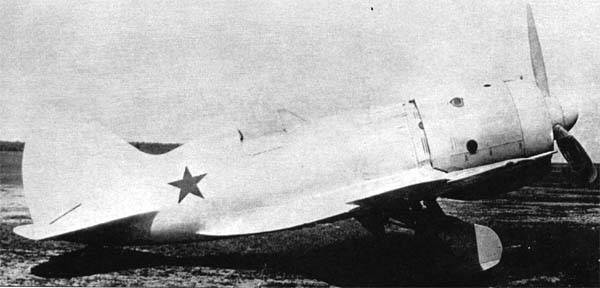
Nevertheless, the work went. M-88 was replaced with a less powerful, but seemingly more finished M-87А, and then with M-87Б. And in a more relaxed atmosphere, And-180-2 made the first normal flight of 19 on April, and 1 on May 1939, under the control of S. p. Supruna aircraft participated in the air parade over Red Square.
In the process of testing and-180-2 showed the speed of 540 km / h. Not God knows what, but the prospect was observed. The aircraft was recommended for serial production with the engine M-88, which by that time had passed state tests. To check, they decided to build a third prototype - I-180-3.
5 September 1939. At the completion of state tests And-180-2, test pilot TP Susi died.
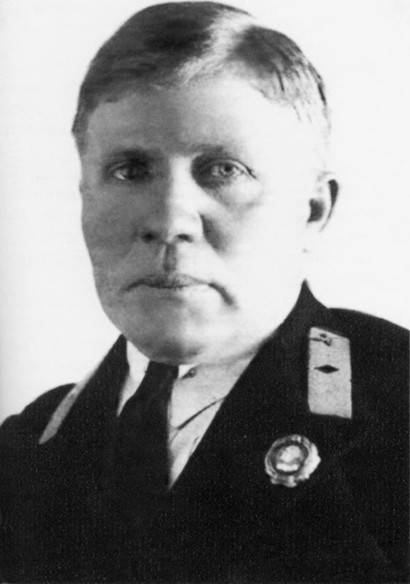
It was 53-th flight in a row with the task to reach the "ceiling". With the crash of the plane, too, not everything is clear even today, the reports say that the plane either steeply declined, or corkscrew from a great height. Upon reaching 3000, it went into horizontal flight, flew normally for a while, then entered the tailspin again. At the height of 300, the plane came out of the corkscrew, and then the pilot for some reason left the car, but did not use the parachute.
There were various assumptions about the causes of the disaster, but the true reason remained unclear.
Contrary to popular belief, I-180 continued on its way. Work on the implementation of the plant number XXUMX continued. The whole question is how.
First, the plant number 21 (located in Gorky) had a large order for the I-16. And, admittedly, the plant management was, to put it mildly, not happy with the new aircraft. Moreover, the factory had its own design bureau, in which they created their own aircraft!
This was the version of the same AND-16 performed by MM Pashinin. And at the plant they expected that they would produce “their own” aircraft, in many respects similar to the I-16, which did not cause problems. The I-21 had a number of original solutions, showed good speed on tests - 573 km / h, but it was not stable enough and had a number of other shortcomings. As a result, the series did not go, but the work on the I-180 slowed down considerably.
Things got even worse in 1940, when, instead of MM. Kaganovich Commissar appointed A.I. Shakhurin, and his deputy for science and experimental construction - A.S. Yakovlev.
14 January 1940 of the year Polikarpov and his deputy and lead designer Yangel (yes, the future rocket man) sent a letter to the NKAP: constructors with I-21 translated into I-180 ".
In the end, Polikarpov was heard, and to consider issues related to the release of the I-180, a special commission of the NKAP and the Air Force Directorate chaired by one of the Deputy Commissar, V.P. Balandina.
The commission decided to oblige the plant to release a series of 30 machines within two months, but this did not help at all. All release dates were failed.
It is impossible to say that nobody listened to Polikarpov. Head of the Air Force Research Institute A.I. Filin in a report to the Air Force Directorate wrote:
And only in April, the first three serial I-180C were somehow ready. Again, they were shown in the parade, and it seemed that the light at the end of the tunnel had faded.
Especially since by that time the factory tests of the I-180-3 had already ended. It should be noted that, on the initiative of Polikarpov’s design bureau, the car was somewhat modified, first of all, by reinforcing the armament.
Two 12,7-mm BS machine guns and two 7,62-mm ShKAS were assembled into one battery. Machine guns were placed on a gun carriage, which greatly facilitated the operation (reloading, cleaning, repair).
The aircraft showed very good results: speed at altitude 3 000 m - 575 km / h, climb time 5 000 m - 5,6 min. Test pilot Ulyakhin noted in the reports that the I-180 is very similar in parameters to the I-16, but is more stable and behaves better on turns and landing.
Of course, deficiencies were recorded. Lack of cab light, poor adjustment of the tail wheel cleaning mechanism, poor screw design, poor surface finish. It was believed that surface treatment with varnish should bring in addition 25-30 km / h.
Polikarpov people worked, installed a lantern on the aircraft, designed and manufactured a new propeller, increased the transverse V wing. In this form, the fighter was handed over to state tests at the Scientific-Research Institute of the Air Force, which were generally successful.
But I-180 was waiting for another blow of fate. No need to be a soothsayer to guess who is to blame. Yes, again the motor!
Motor infarction
Numerous complaints of defects and failures led to the fact that M-88 was discontinued! At the same time, flights were banned from all aircraft with this engine, including the I-180. Of course, the engine builders did everything to solve the problems, but Su-2, IL-4, and-180 remained on the ground. It was only at the very end of 1940 of the year (December) that M-88 re-tested, and the ban was lifted. Work resumed.
OKB Polikarpov constantly improved their aircraft. At the beginning of 1941, projects for the new M-88A and M-89 engine were ready. The airplanes registered radio station RSI-4 on permanent rights. According to calculations in KB, the maximum speed of the I-180 with the M-89 motor was to reach 650 km / h.
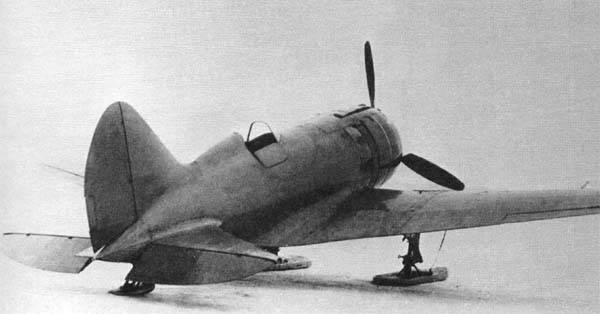
Looking ahead, it's worth saying that in 1942, the year M-89 was discontinued as an unreliable and underdeveloped engine. They simply dismissed him in favor of the mastered M-88B. Under martial law, in principle, fair.
But at the beginning of 1941, the decision to remove the I-180 from the sky struck like thunder from the sky!
Already far after the war, the People's Commissar of the aviation industry, Shakhurin, after serving his own, after rehabilitation, in his memoirs recalled that the NCAP was really overly enthusiastic about water cooling engines. It is clear that the Messerschmitt flew, and flew well, but this is absolutely no reason to copy everything to the screw.
Although, it is worth admitting that we copied everything.
In general, radial motors for air cooling were considered inappropriate for use. All programs have been minimized. In response to Polikarpov, Deputy People's Commissar AP Yakovlev wrote:
And at the factory number XXUMX began to master the production of LaGG-21. Airplane with a completely different technology. I note that the plant number 3, which for a year could not squeeze out 21 I-10, already in a month “drove” LaGG-180 as if nothing had happened.
Harm or envy?
It is hard to say. I think that an 180 would in any case be a “trial balloon,” followed by an 185, a more promising aircraft. And here the technological chain of I-16 - I-180 - I-185 was traced, the main value of which was the presence of continuity in production.
We will talk about the 185 in the next article, the plane is worthy of a separate discussion. At the turn of 1940, I-185 was already ready, he waited, waited for his engine.
Let's reason. If I-180 with a motor in 1100 hp showed a speed of about 600 km / h, then for a more perfect in terms of aerodynamics and 185, and even with a motor in 1700-1900 hp The estimated speed of the order of 700 km / h was quite real.
By the way, for the Germans this is 1945 year. If “Focke-Wulf” had a motor in the 2200-2500 hp, it would be a terrible car ...
If the I-180 would go into the series, then the MiG-1, LaGG-3, Yak-1 would not be needed. Or needed, but not in such quantities. MiG-3 was not a competitor in terms of armaments, LaGG-3 was inferior in LTX, Yak-1 ...
With "Yak" in general, everything was sad. I spoke about this quite specifically in the material on this aircraft. 7 more than a thousand changes in the design - this is serious.
Let's look, look into all eyes!
LaGG-3. The most successful of the triad, in my opinion (La-5 and La-7 confirmation of this), but expensive to produce because of the delta-wood and with a very weak engine.
But Gorbunov was the head of the 4 department at the First General Directorate of the NKAP. It is clear that it is not Yakovlev, but still. Lavochkin and Gudkov - his subordinates, who oversaw the aircraft factories.
Probably, here you can find the answer to the question why LaGG-3 began to be driven even at five factories, but they left none for Polikarpov. The designer’s brother, Sergey Petrovich Gorbunov, (1902 — 1933) was one of the organizers of the Soviet aircraft industry, the director of the largest aircraft building plant in Europe, No. 22 in Fili.
MiG-3. A good plane, but a perfect "iron" at low altitudes. Attempts to facilitate the aircraft led to the fact that weapons became the weakest of all.
But Artem Mikoyan was the younger brother of Anastas Mikoyan himself. No comments.
Yak-xnumx. The most undetected of all aircraft. Also, by the way, who took the life of test pilots to the sky. And if the state tests of MiG and LaGGa were more or less normal, then with the Yak-1 the situation was much more complicated.
But Yakovlev was the Deputy Commissar of AP Shakhurin.
Coincidence? I do not know. Today it is very difficult to judge. But it is difficult to comment, especially knowing that Polikarpov did not have anything behind him, except for what he had. And absolutely had no support.
Everything's possible. Launched into a series of aircraft for many - recognition, order, immunity (possibly). But first of all - the opportunity to live and work. And others (like Polikarpov) could receive a pardon. You are a fighter country, it is for you - 10 is conditionally instead of real years.
As an example, it is worth giving all the same Yak-1. The plane claimed the life of Yulian Piontkovsky, test pilot of the Yakovlev Design Bureau, but the second flight copy (I-26-2), which began flying before the first one crashed and had the same defects. on state tests. And after three days, the Air Force Research Institute recognized the car that passed the state tests.
Questions? Comments? So I do not. However, we have already talked about the Soviet triad of the beginning of 40's. There are more than enough strange moments and dark spots on reputations.
I basically have no questions left. Could Polikarpov resist the cohort of "young and zealous", rushing upward designers?
Not of proletarian origin, a pupil of Sikorsky who emigrated, with a suspended sentence and the prospect of playing sharaga at any moment?
So I think I could not. Yes, and confront such people. With such, as they would say now, "garters".
Polikarpov could only design airplanes and build them if he was allowed to. Support NCA? Objectivity? Definitely not.
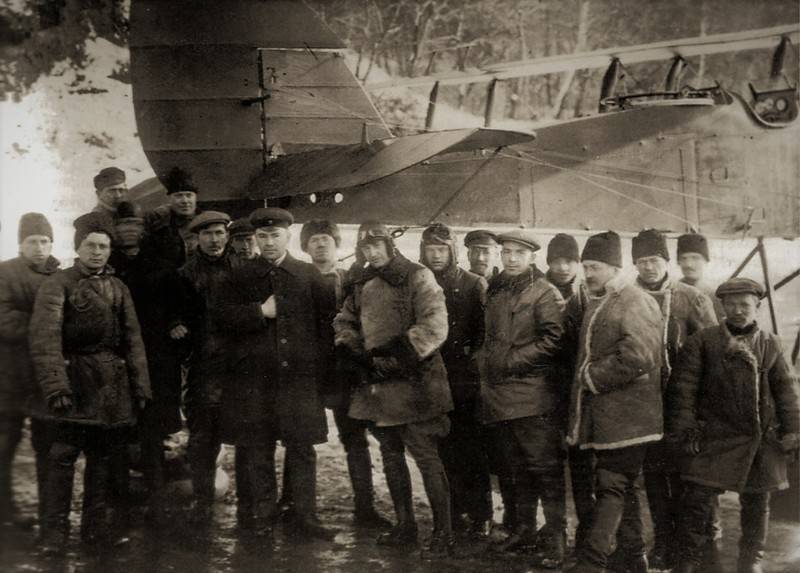
At least, the removal from serial production six months before the war I-180 and launch instead of it at the plant number XXUMX was inferior to him in many respects LaGG-21 I would not call it an act in favor of the state.
And today it becomes clear why three models began to be produced at once. Who can, so to speak. It is clear that MiG and LaGG were a kind of safety net for the completely unsuccessful Yak.
Again, why was it necessary to start collecting LaGGi at five plants, depriving Polikarpov of a single plant?
I will say a seditious thing. I can imagine how happy Yakovlev, Gorbunov and Mikoyan were when Polikarpov lost his shield, Chkalov. It really was a gift of fate ...
It is very difficult to say how good the i-180 could be. Very difficult. But given that the royal titles just do not give, I think that the plane could be no worse than the triad. Perhaps - better.
But there is another moment. If the comrades (who are sometimes worse than the masters), the designers would not be in such a hurry to drown Polikarpov, at the time of 22.06.1941 in the Red Army Air Force there could be such a number of modern and powerful fighters that an instant blitzkrieg might not have happened.
But this is an argument solely in favor of the losers. But we will discuss this topic in a conversation about the 185.
Sources:
Shavrov V.B. The history of aircraft structures in the USSR 1938-1950.
Maslov M. Fighters I-180 and I-185.
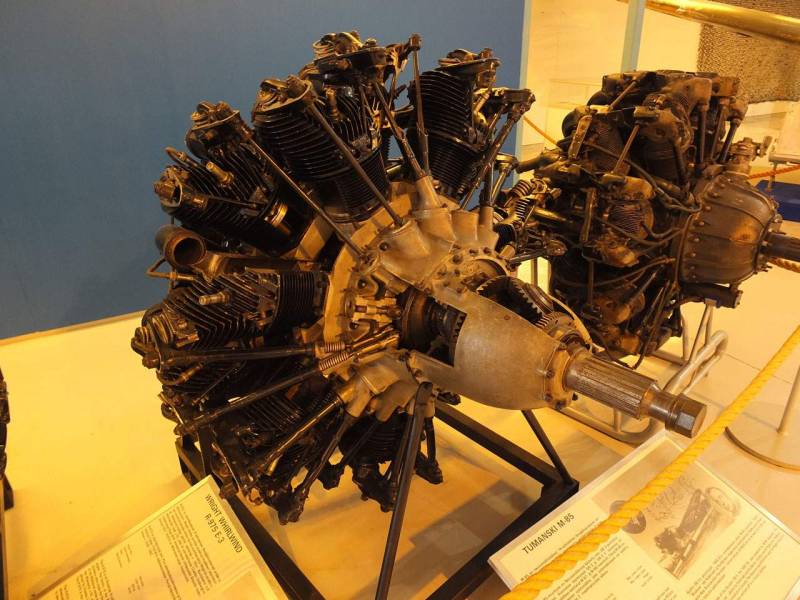
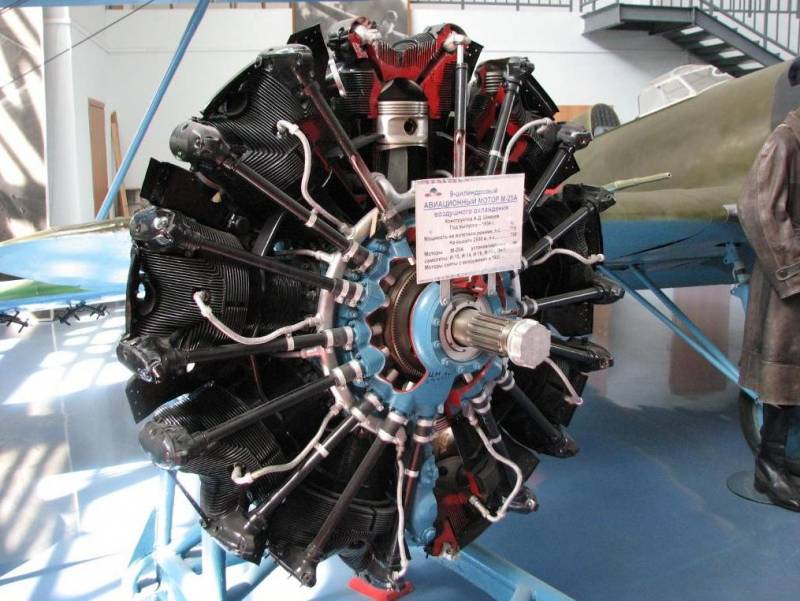
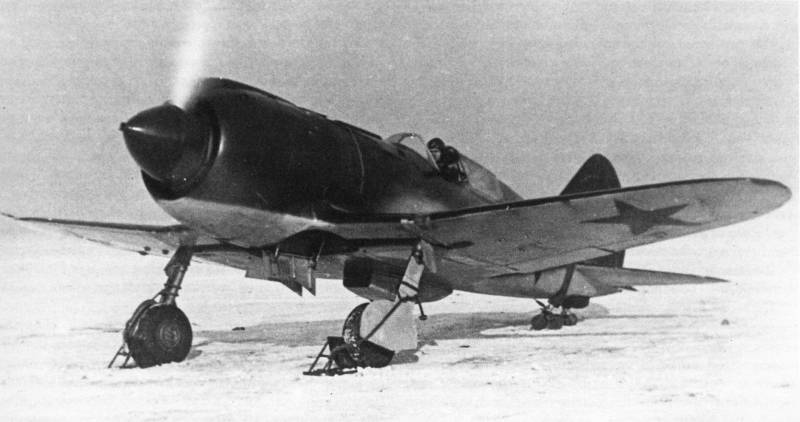
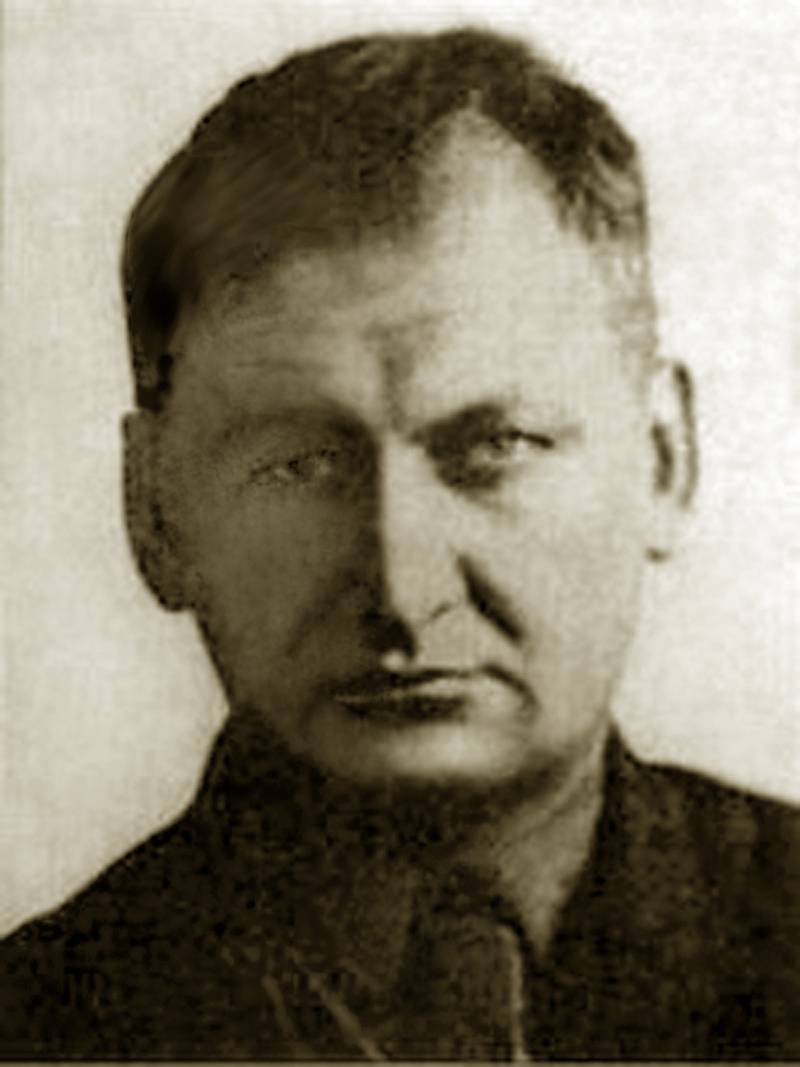
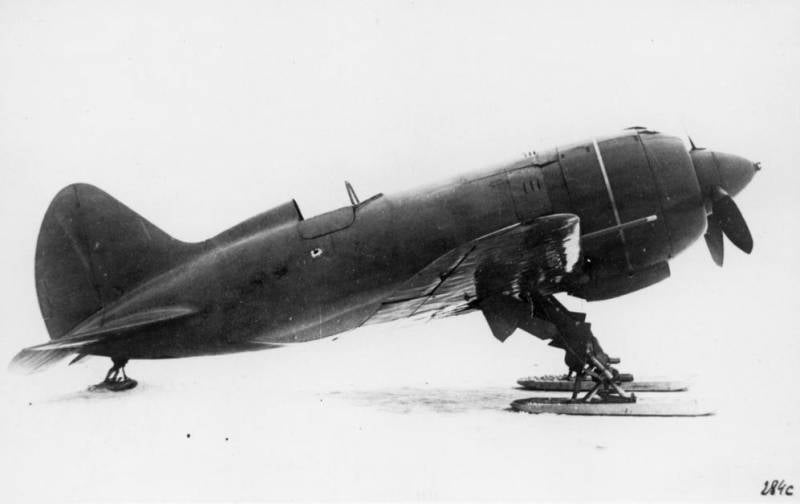
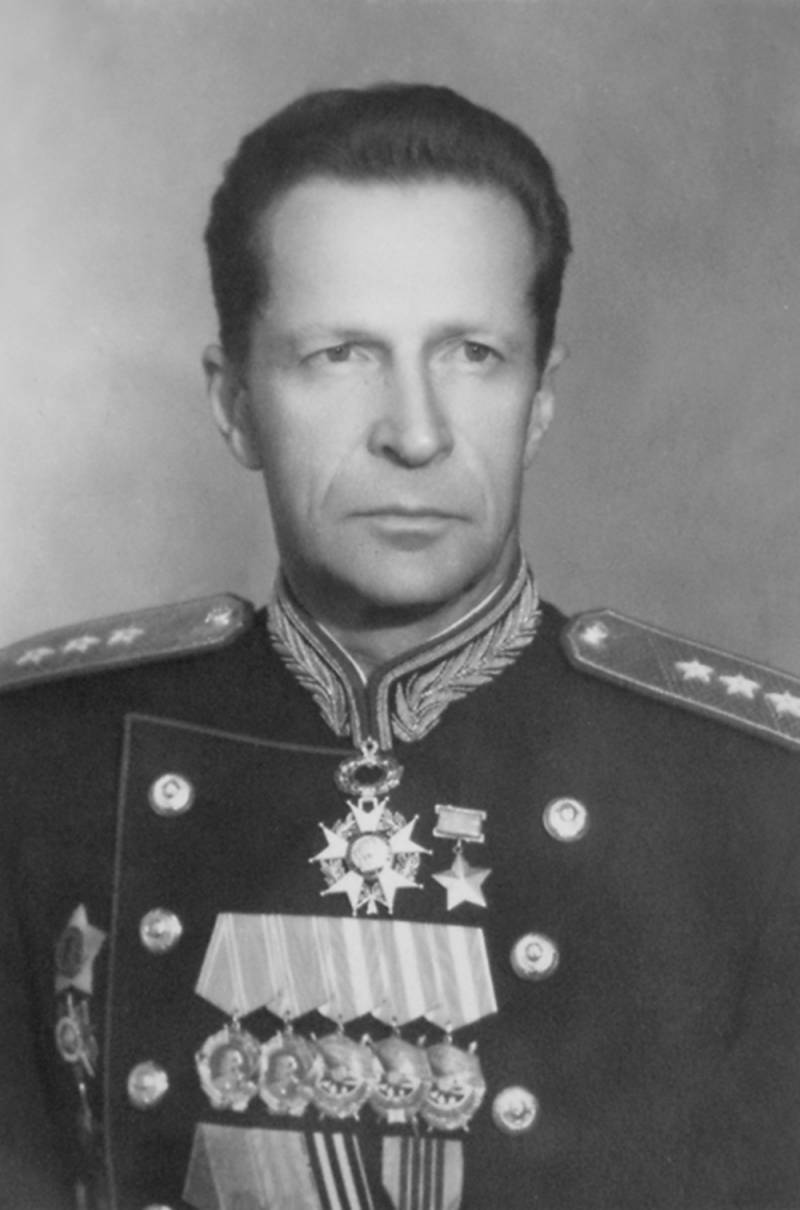
Information